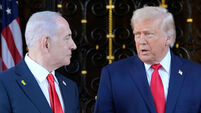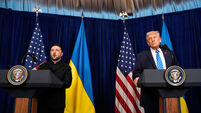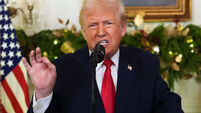David McNamara: Could the market rout force a Trump U-turn?

The question now is whether the global economy can absorb the impact of the isolationist turn by the US. Picture: Yik Yeung-man/Bloomberg
Last week’s salvo of tariffs by the Trump administration raised the stakes for global trade partners, particularly those hit hardest in Asia and Europe.
The EU tariff is to be set at 20%, with a carve-out in some areas for now, such as semiconductors, lumber, and, crucially for Ireland, pharmaceuticals.














